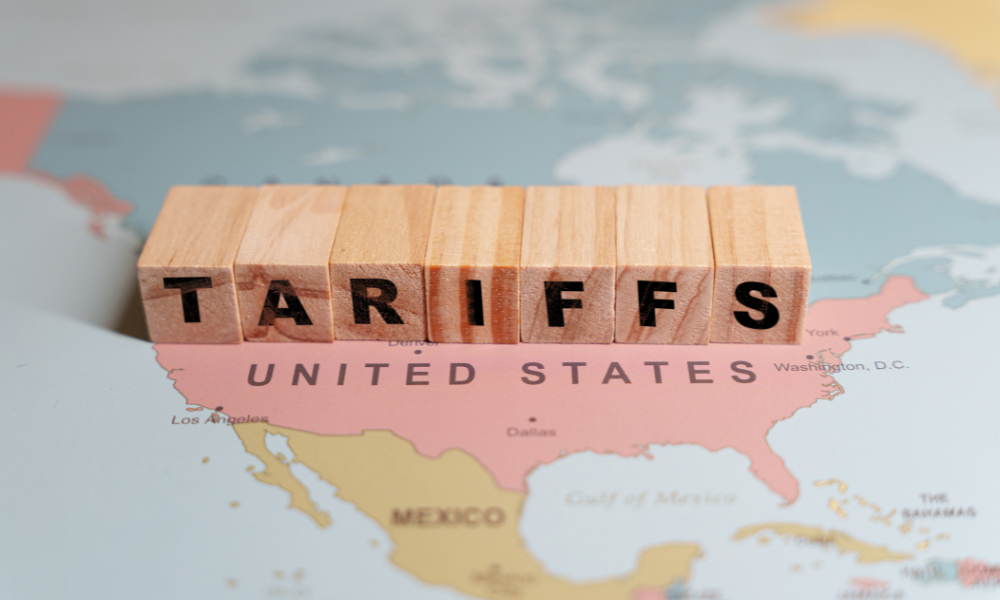Despite policy developments from the Trump administration and shifts in the AI sector, equity markets remained resilient, so far

Middlefield’s February 2025 Market Commentary reports that equity markets performed strongly in 2024, with the S&P 500 and TSX Composite delivering total returns of 25 percent and 22 percent, respectively.
This continued the momentum from 2023, with the US market achieving over 50 percent gains in two years—the best performance since 1997-1998. Gains were widespread, as 10 of 11 S&P 500 sectors posted positive results.
In January 2025, despite policy developments from the Trump administration and shifts in the AI sector, equity markets remained resilient.
The S&P 500, TSX Composite, and MSCI World Index gained 2.8 percent, 3.5 percent, and 3.6 percent, respectively.
On January 30, President Donald Trump announced 25 percent tariffs on imports from Canada and Mexico, delaying them by 30 days after four days. These tariffs target the US’s top two trading partners and serve as a negotiation tool.
Middlefield noted that Tariff risks are likely to persist and require monitoring. However, Trump’s objectives have become clearer, suggesting a possible resolution.
Canada’s $1.3bn border plan, which includes investments in drones, helicopters, and appointing a Fentanyl Czar, has temporarily eased US border concerns. Unlike border issues that can be resolved quickly, USMCA renegotiations present a complex challenge.
Although scheduled for review on July 1, 2026, Trump has expressed a desire to accelerate discussions. A Canadian federal election in the second quarter of 2025 could set the stage for substantive trade negotiations.
The tariff dispute has prompted Canadian businesses to expand trade relationships beyond North America. Canada recently signed a free trade agreement with Ecuador, its 16th under an eight-year diversification strategy.
Additionally, negotiations with ASEAN’s 10-member bloc and leveraging agreements such as CETA and CPTPP reflect Canada’s shifting trade focus. There is growing support for reducing interprovincial trade barriers, which could benefit businesses.
Despite geopolitical risks, economic fundamentals remain strong. The US economy has transitioned to stable growth post-pandemic.
Employment, business investment, and consumer spending remain at healthy levels. Corporate cost restructuring and AI-driven efficiencies are supporting earnings growth, even as the labour market moderates. While policy risks persist, market fundamentals continue to support equities.
The Canadian real estate sector recorded a 0.4 percent return in January, underperforming the TSX by 3 percent while remaining at historically low valuations.
Macroeconomic concerns, including tariffs, have overshadowed positive fundamentals in the sector.
Middlefield stated that Canadian REITs are projected to benefit from 5 to 6 percent AFFO growth over the next two years.
Meanwhile, US REITs gained 4.1 percent, outperforming the S&P 500’s 2.8 percent return. Prologis, the largest US REIT, saw a 12.9 percent return in January and a 17 percent increase in its leasing pipeline.
Healthcare M&A is expected to accelerate in 2025.
Recent deals include Johnson & Johnson’s $14.6bn acquisition of Intra-Cellular, Stryker’s $4.9bn acquisition of Inari, Eli Lilly’s $2.5bn acquisition of Scorpion Therapeutics, and GSK’s $1.15bn acquisition of IDRx Inc. A focus on oncology reflects strategic sector priorities.
The AI sector saw volatility following OpenAI, SoftBank, and Oracle’s announcement of the $500bn Stargate Project. While DeepSeek’s R1 AI model raised concerns over semiconductor demand, tech giants Microsoft, Meta, and Alphabet reinforced their AI investments, maintaining sector confidence.
Canadian pipeline firms such as Enbridge (ENB) and TC Energy (TRP) remain insulated from potential oil and gas tariffs due to long-term contracts. Canada is diversifying energy exports with the TMX pipeline and LNG Canada, reducing reliance on US buyers.
Recent approvals in British Columbia signal potential regulatory shifts benefiting the sector.
Gold prices surpassed US$2,800 per ounce, driven by tariff concerns and economic uncertainty. Gold producers such as Barrick and Newmont trade at valuation discounts compared to the S&P 500, presenting margin expansion opportunities.
The S&P/TSX gold index rose 16 percent in January, outperforming gold’s 6.8 percent increase.
US tariff risks may impact Canada’s energy sector, but a weaker Canadian dollar and potential crude price increases could offset effects.
Middlefield reports that long-term trends in natural gas demand and interprovincial trade reforms remain key factors shaping Canada’s economic outlook in 2025.



